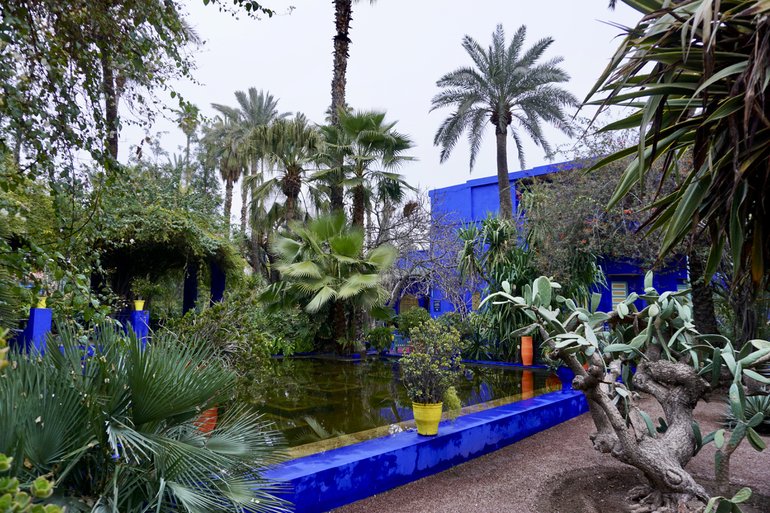In late January I was lucky enough to represent the Shakespeare Birthplace Trust on a trip to Morocco with REEP, visiting gardens and attending several meetings. The gardens over there are very different, as you can imagine, as the climate is much warmer to ours here in the UK – although I must add during my visit I had a cosy coat on as it only got to lows of 3 °C! It was interesting seeing their techniques on how they keep their plants watered (they mound up the earth around a plant/group of plants to create a walled pond effect to fill with water), the way they prune a lot of their palms and succulents in public parks (they cut off the bottom most leaves to only leave vertical growth which I assume is for aesthetics), and their use of beautifully arranged tiles (each piece individually hand crafted – I took many, many photos of different tile designs!).

Whilst there, one of the main purposes of the trip was to visit the Shakespeare Garden at Cadi Ayyad University in Marrakech. The garden was built in 2014 by REEP as part of their Anglo-Moroccan Shakespeare Garden Project which features some of the plants that Shakespeare mentioned in his plays such as Roses, Lavender, Aloes, and Thyme. It also includes a stage as part of the design for the students to use as a performance space. It’s currently in need of TLC as there have been a few difficulties with the Dean at CAU changing, but as part of our visit the new Dean expressed how they want to help make sure the garden is cared for – with the future of the garden looking very promising with potential to possibly add a knot garden inspired design to the borders.
Here are a few highlights of the other gardens I visited:

Le Jardin Majorelle was created by French painter Jacques Majorelle and took him 40 years to construct. It’s almost 2 and a half acres in size, and is full of exotic plants and bright colours. There’s a great use of water around the garden, including the impressive reflections in the still Lily Pool, a long rill to lead the eye down towards the bright house, and various fountains with satisfying bubbling sounds. The blue that’s used around the garden is known widely around Morocco and beyond as the aptly named “Majorelle blue”.

The Jardin de la Menara was impressive to take in as you look across the artificial lake towards the pavilion with the Atlas Mountains capped with snow in the background (not a sight normally associated with Morocco!). The lake is surrounded by some thousands of olive, palm, and fruit trees which cover most of the site, which is over 100 hectares. There is a small garden surrounding the pavilion itself that's filled with herbs and exotic treats such as Bird of Paradise plants. My favourite folklore story I heard about this place was that a Sultan, that used to live in the pavilion, would invite certain guests who he would charm over dinner and then have them thrown into the lake to drown... a cheery chap!

Bahia Palace (palace of the beautiful, the brilliant) well and truly lives up to its name. The rooms inside the building seem to blend seamlessly with the outside, so many different and colourful tile arrangements on ceilings, walls and floors with every design a piece of art, and the clever use of small vistas with either a doorway, mirror or plants at the end to tempt you along. Part of the gardens are in the Islamic style of the division of four, whereas other sections are more open and have a very peaceful feel like that of a Japanese zen garden.

Le Jardin Secret was a must visit before I had even arrived in Morocco as it had been featured on the BBC by Monty Don and in Gardens Illustrated magazine. The garden is split into two courtyards, the Exotic Garden and the Islamic Garden. The Exotic Garden, the smaller of the two, is filled with plants from all over the world and reflects a Christian view of the 'Garden of Paradise'; it almost felt like I was in the wild with the sound of the vibrant birdsong and soft running water. The Islamic Garden is, as the name suggests, set in the traditional Islamic style of gardens with the division of four and reflects heaven as depicted in the Quran; it was incredibly serene sitting on one of the benches and watching the grasses and lavender sway gently with the smell of the rosemary hedges filling the air – heaven indeed!
Overall, it was heartwarming to see people’s enthusiasm for Shakespeare, as well as gardening, in Morocco. The gardens and parks there are absolutely stunning and I highly recommend visiting if you get the opportunity.
